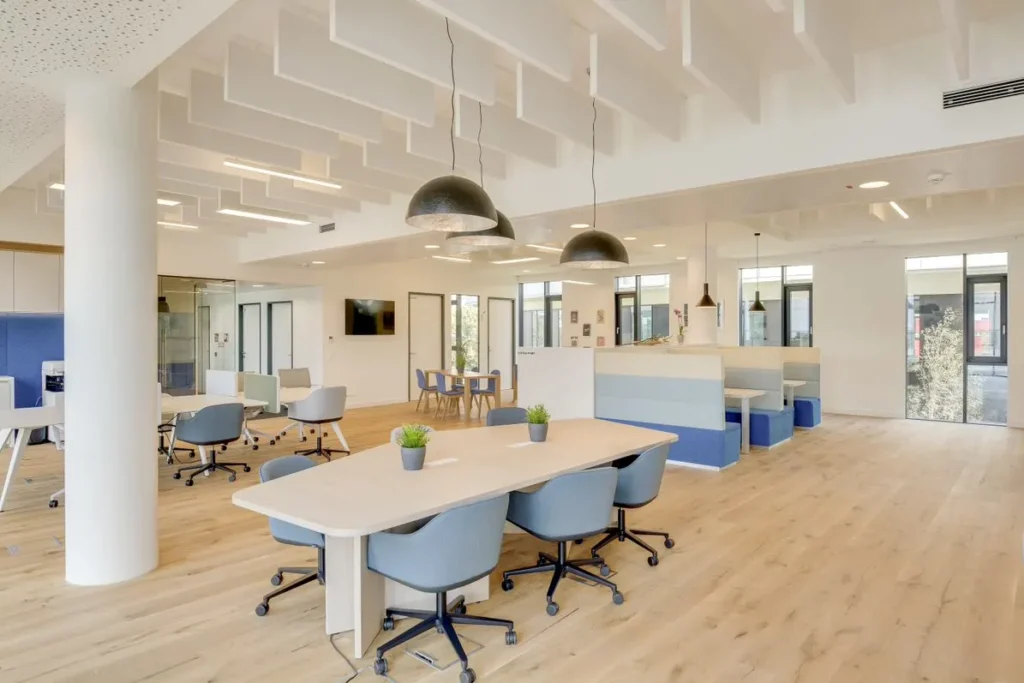Have you been considering an office move, but are worried about the associated downtime? Don’t let the fear of lost productivity stop you! This article will provide you with tips and strategies to minimize disruption during your move and help ensure a smooth transition. Read on to learn how to make your office move as efficiently as possible!
Choosing the Right Moving Company
Choosing a reliable, experienced partner for a commercial office move is essential to minimizing downtime and ensuring the quality of your move. Working with the right moving company can make all the difference in maintaining productivity and avoiding costly delays.
When selecting a commercial removal company, be sure to ask key questions to get a full understanding of the process and how they will ensure the safety, security, and efficiency of your move. Consider all available options and use these criteria to determine which company is right for you:
- Reputation: Ask around or research online reviews to learn more about what others have experienced when working with potential providers. A quality mover should also belong to relevant trade associations that maintain standards within the industry.
- Experience: Make sure that their staff has expertise in handling complex office moves with minimal disruption to normal business operations during and after the move.
- Insurance Coverage: Find out what type of insurance coverage is included with each service package offered and whether you are liable for any damage before, during or after transit.
- Timing: Have timelines cemented before confirming anything—it’s essential that both parties understand deadlines from start to finish so there are no misunderstandings when it comes time for delivery.
- Special Requirements: If you need any additional assistance with unpacking items, setting up IT equipment, or other services related to office reassembly, make sure this is all covered in their service package beforehand.
- Costs: Be aware of any extra fees outside of their base rates such as disposal rates, travel costs, or special handling fees so that you know precisely how much you’ll be paying throughout the process.
Pre-Move Planning

Source: tsishipping.com
Pre-move planning and preparation is the most important step in ensuring a successful and efficient office move. At least three months prior to your move, you and your leadership team should develop a plan that sets clear goals, timelines, resources, and budgets. As with any major project, it’s essential that a realistic timeline is drafted to keep everyone on task and organized during the move.
To begin your plan, consider the types of services that will be needed for a successful transition. These may include tasks such as:
- Preparing furniture for moving;
- Packing materials out of storage;
- Transporting electronics and equipment;
- Cleaning the new location space;
- Arranging for utility connections;
- Setting up IT networks;
- Acquiring boxes or containers for packing items;
- Stocking supplies at the new space;
- Coordinating staffing needs associated with moving furniture and supplies into their new spaces or cubicles;
- Setting up necessary telecommunication lines;
- Organizing relocation policies;
- Scheduling move-in date(s);
- Ancillary building costs, like permit fees from city/state agencies;
- Notifying clients/customers about a change of address or phone number if required.
Managing Employees During the Move

Source: cordmoving.com
It is important to plan and manage the transition process to minimize downtime and maximize productivity. Here are some tips for managing employees and ensuring a successful, efficient office move:
- Ensure that each employee is aware of their individual roles in the transition process. Clear guidelines should be established for what needs to happen before, during, and after the move so everyone knows how their work can contribute.
- Create awareness around the timeline of tasks associated with each role involved in the transition, and provide regular updates on overall progress to employees using internal communication tools like an intranet or email updates.
- Identify where resources might be needed during different stages in the process, such as extra employees helping with packing before transport or extra IT teams making sure your network is swiftly up and running in your new office space.
- Make sure you have all necessary equipment like boxes, furniture dollies, packing materials, etc., ready well ahead of time so everything goes smoothly once you’re ready to start moving offices.
- Ensure team morale remains high by rewarding employees for their hard work throughout this time – whether this means an extended lunch break on a moving day or giving out special employee appreciation awards at company-wide meetings.
Setting Up the New Office

Source: iwgplc.com
Planning ahead is key when setting up a new office. Here are some strategies to help your workplace get up and running quickly with minimal downtime.
Before Moving Day
- Draw up a detailed floor plan of the new space and mark out areas designated for each department or specific pieces of equipment such as printers, fax machines (to save space you can also opt for a Gmail fax service), and computer systems.
- Prepare cable trays and surface mount the cables if possible in order to speed up the installation process on a moving day.
- Label all boxes accurately so that they can be easily placed in their correct locations upon arrival at the new office.
- Contact local service providers such as internet and phone provider to schedule installation times that suit your move timeline.
On Moving Day
- Designate clear paths through the office to allow for easy transit of furniture and equipment.
- Assemble any furniture that requires assembly such as desks, chairs, etc. prior to actually moving in order to save time on a moving day, or ask your movers if they provide a furniture assembling service.
- Start setting up IT equipment like desktops, laptops, etc. from their assigned locations first before unpacking boxes. Ask staff members who are familiar with these systems to take the lead in this area for faster setup times.
- Arrange any décor pieces such as plants or wall hangings last so that you can focus on more urgent tasks first before beautifying the space later on when there’s more time available.
Conclusion
Ultimately, no office move will ever be perfect, but with careful planning and ample preparation, it can be painless and efficient. The most important thing is to keep communication open throughout the entire process. Establish an open line of communication with all stakeholders including staff members and third-party vendors so that everyone is on the same page from beginning to end.

















